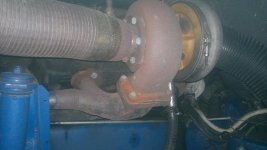You are using an out of date browser. It may not display this or other websites correctly.
You should upgrade or use an alternative browser.
You should upgrade or use an alternative browser.
New engine build Scania DC1601 for our semi truckpuller.
- Thread starter tall boy
- Start date
CurtisEmery
New member
- Joined
- Nov 29, 2007
- Messages
- 418
Not yet I have been swamped this week. I will make some calls today and see what I come up with.
CurtisEmery
New member
- Joined
- Nov 29, 2007
- Messages
- 418
I should have an answer for you on monday.
CurtisEmery
New member
- Joined
- Nov 29, 2007
- Messages
- 418
PM sent
Thanks CutisEmerry for the info, still hope you can get some flowmaps, meanwhile I did compare a few flowmaps my self as you can see in the pictures.
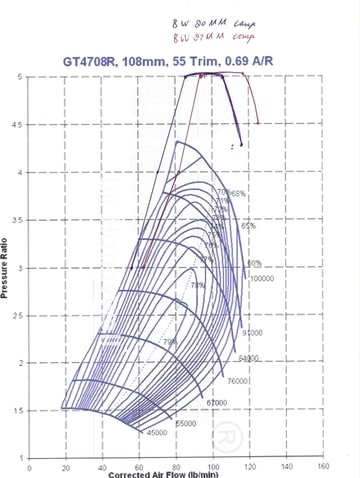
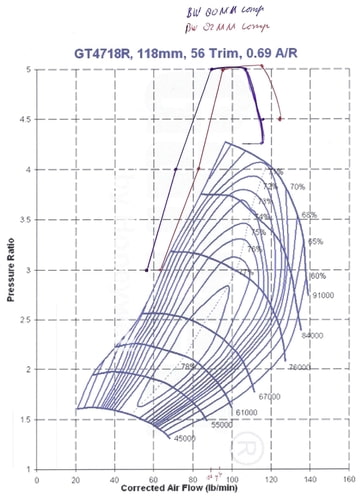
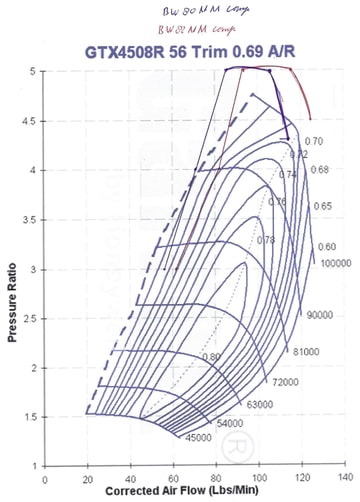
In red the BorgWarner 82mm billed wheel
In blue the BorgWarner 80mm billed wheel
I only did work out the part that I need for my application but I also based my conclusion on efficiency shaft RPM pressure ratio all based on information on paper so don’t shoot me if you think/feel different.
My conclusion on single stage performance:
BorgWarner makes a better 80 to 82mm compressor rating based on pressure ratio and shaft RPM.
Garrett run way more RPM putting more stress on the back of the compressor wheel that makes it more likely to burst on hi pressure or even if they compensate for this they will need more or stronger material to create the strength needed.
Compressor efficiency is not far of between the two brands.



In red the BorgWarner 82mm billed wheel
In blue the BorgWarner 80mm billed wheel
I only did work out the part that I need for my application but I also based my conclusion on efficiency shaft RPM pressure ratio all based on information on paper so don’t shoot me if you think/feel different.
My conclusion on single stage performance:
BorgWarner makes a better 80 to 82mm compressor rating based on pressure ratio and shaft RPM.
Garrett run way more RPM putting more stress on the back of the compressor wheel that makes it more likely to burst on hi pressure or even if they compensate for this they will need more or stronger material to create the strength needed.
Compressor efficiency is not far of between the two brands.
CurtisEmery
New member
- Joined
- Nov 29, 2007
- Messages
- 418
Thanks CutisEmerry for the info, still hope you can get some flowmaps, meanwhile I did compare a few flowmaps my self as you can see in the pictures.



In red the BorgWarner 82mm billed wheel
In blue the BorgWarner 80mm billed wheel
I only did work out the part that I need for my application but I also based my conclusion on efficiency shaft RPM pressure ratio all based on information on paper so don’t shoot me if you think/feel different.
My conclusion on single stage performance:
BorgWarner makes a better 80 to 82mm compressor rating based on pressure ratio and shaft RPM.
Garrett run way more RPM putting more stress on the back of the compressor wheel that makes it more likely to burst on hi pressure or even if they compensate for this they will need more or stronger material to create the strength needed.
Compressor efficiency is not far of between the two brands.
I have never really had any luck comparing maps between borg and garrett. I can tell you they both make an excellent turbo. I prefer the garrets for their higher flowing turbines and bb center sections. The gtx compressor maps tend to be on the conservative side. You can spin them a lot harder than the flow maps show. I am currently running a gt47 18r and have ran all season at a pr of 5 with a cast wheel to boot. The ball bearing chra's will handle overspeed better than the journal turbos. On a side note I have a friend who is running a gtx5533r 94mm in a sled pulling app. That charger would make 68psi and still make loads of power. I think 2 gtx5518r's would work really nice on that monster!
Here you go a gtx5518r and in red the BorgWarner S482S and a S588s in red, maybe not the same size compressor but OK it will give you some idea.
Please notice compressor efficiency.
gtx5518r and S482S
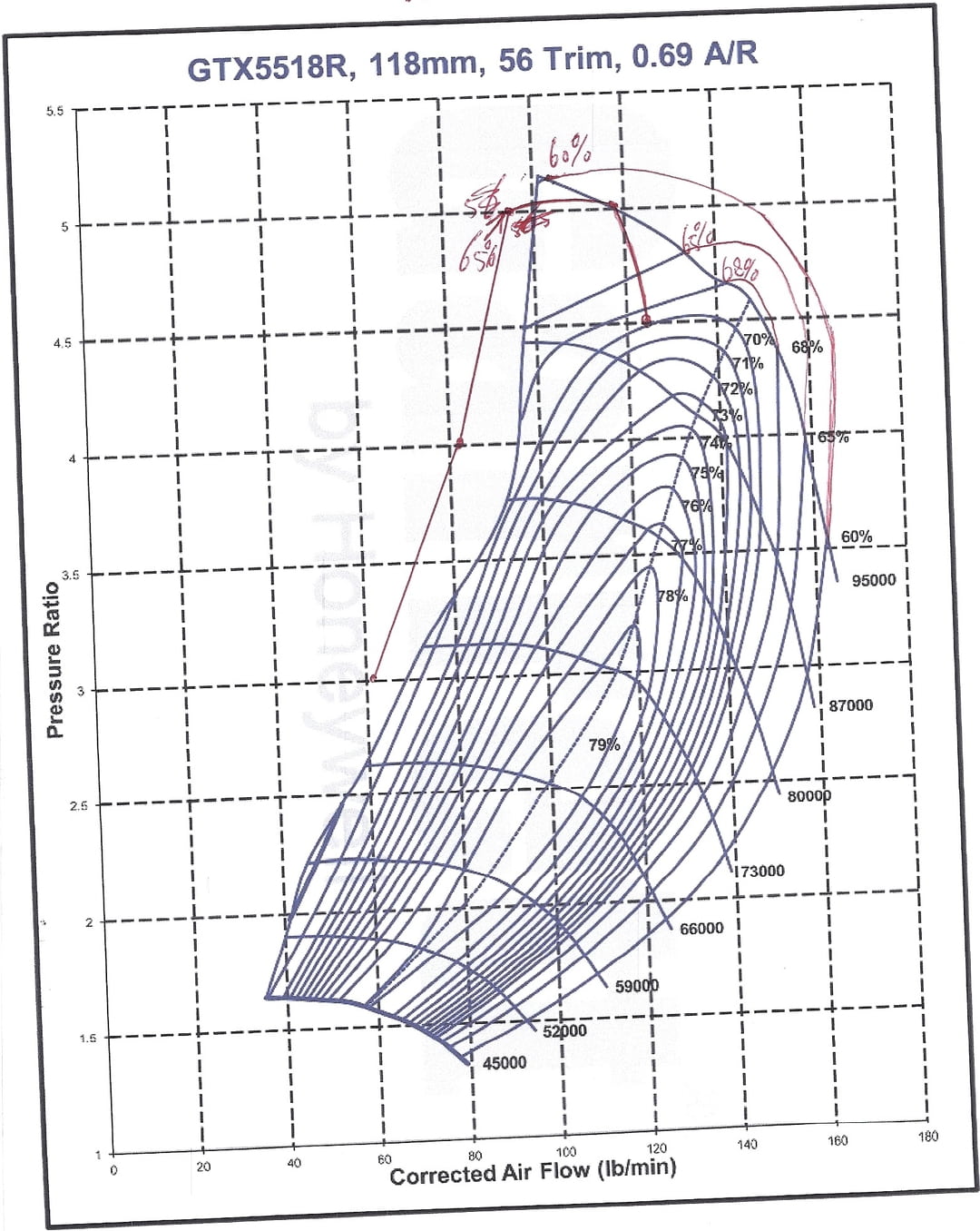
gtx5518r and S588S
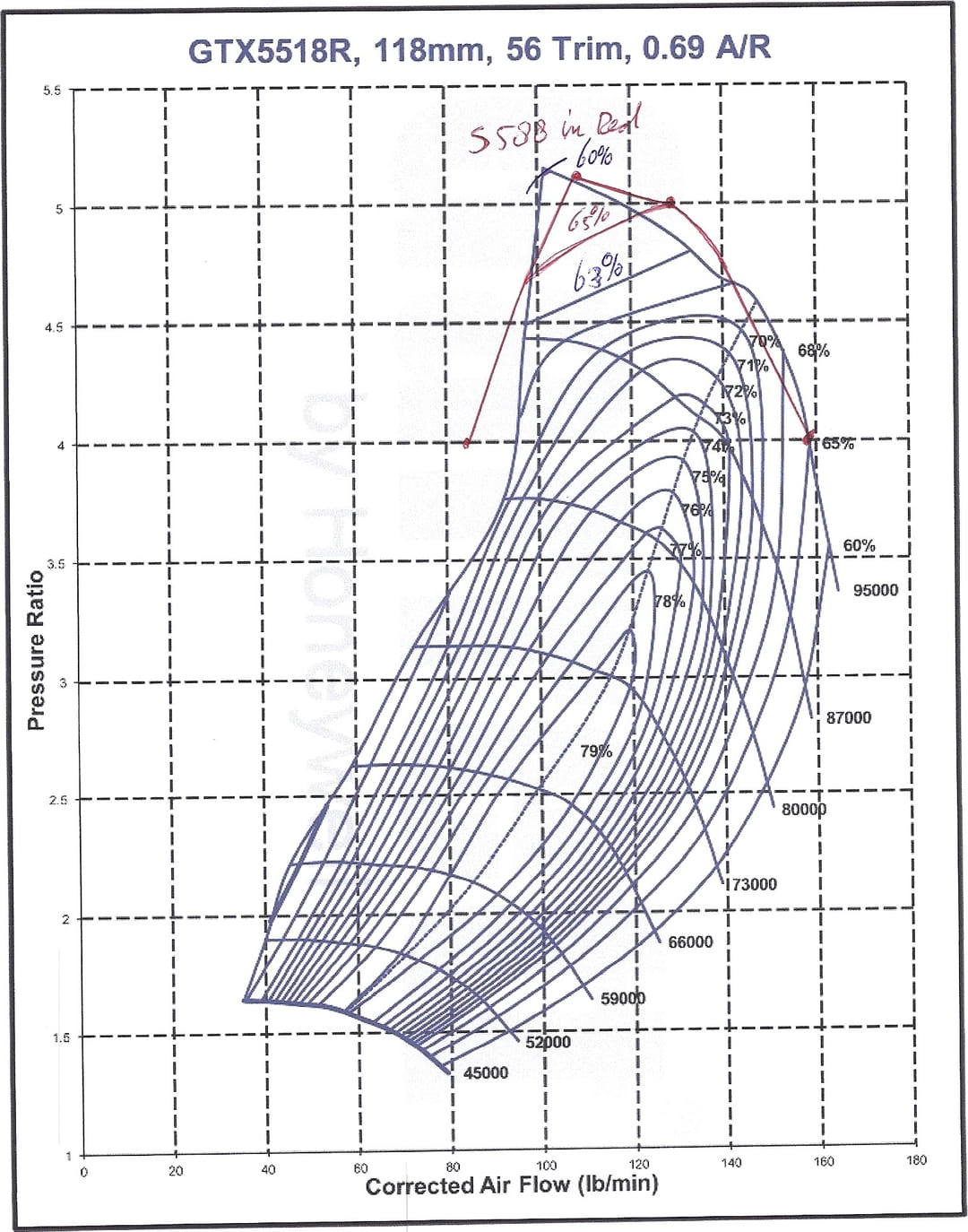
Most important is the price as I can bay more than 2 BorgWarner turbochargers for one Garrett.
Please notice compressor efficiency.
gtx5518r and S482S

gtx5518r and S588S

Most important is the price as I can bay more than 2 BorgWarner turbochargers for one Garrett.
CurtisEmery
New member
- Joined
- Nov 29, 2007
- Messages
- 418
If price is of concern I would lean towards the s500 88mm almost same specs as as gt55. The s400 turbine will not flow enough for what you are doing. There are also many turbine housing options.
If price is of concern I would lean towards the s500 88mm almost same specs as as gt55. The s400 turbine will not flow enough for what you are doing. There are also many turbine housing options.
The set-up we are aiming @ is 65PSI so the modifications we going to do to the turbo a set for that.
Well yesterday we get the turbine parts shipped out for the S400. There are a lot more turbine houses than you think bad thing is there OEM based so you can only order by part number form the OEM and it dos not say BW but it is the same family. We going for a 1.32AR on the 82 turbine wheel.
S588 is to big for the low end we want. Top en only means reducing max boost a bit and get a deeper AFR but that dos not effect power a lot unless we make way to many backpressure in the exhaust but even then more wastegate will solve this.
CurtisEmery
New member
- Joined
- Nov 29, 2007
- Messages
- 418
Sounds like you have things ironed out pretty well. Looking forward to seeing the results!
Sounds like you have things ironed out pretty well. Looking forward to seeing the results!
Well on paper it all looks perfect but reality can be different. :huh::
If the S400 is proven to be to small we can always use them on our 14L V8 engine and go for a S500 for the 15.6L engine.
jeremy153624
New member
- Joined
- May 10, 2009
- Messages
- 565
Keep up the good work, enjoyed this read!
nwpadmax
Turbo Geek
- Joined
- Nov 22, 2006
- Messages
- 3,128
Well on paper it all looks perfect but reality can be different. :huh::
Yup, compressor maps are cool, but only having half the equation can be problematic...
Not a lot of news on the Scania engine other than we going to install the engine in the truck and we have to redo a whole lot of wiring as we installed a lot more sensor on the engine and relocated a lot of things like fuelpumps and added control valves for the wastegate.
We are also waiting for parts and it seems we have some delay on them so fingers crossed that’s it will work out fine as we can not test it on the dyno.
Something completely different. Over the last time a get a loads of e-mail and massages if it possible to build an ECU or ECM for loads of engine type and yes it’s possible.
Next that’s asked most of the time is what Hp and RPM gain to make, well the ECU or ECM we build is not the limit on that, the engine hardware is and on loads of engines we have the information and know where the limitations could be and on most bigger Bosch stuff like Cummins QSK for example, but we can not give information as they will kill me for giving it.
Well as with all things there is a start on engine performance improvement and best thing to do is start testing the engine as it is and almost the first restriction to meet is the ECU or ECM as it do not allow you to go outside normal parameters. Ones that is solved and your able to generate data you can bring it to the next level and find out if the fuelpump or injectors are the next limitation.
On most big injection stuff we know where the limitations are, the only thing we don’t know what the outcome of a modification will be, so far we have been lucky with upgrades being a stabile platform but we also know a small change can bring the whole thing down making nothing more than expensive scrap metal.
We are also waiting for parts and it seems we have some delay on them so fingers crossed that’s it will work out fine as we can not test it on the dyno.
Something completely different. Over the last time a get a loads of e-mail and massages if it possible to build an ECU or ECM for loads of engine type and yes it’s possible.
Next that’s asked most of the time is what Hp and RPM gain to make, well the ECU or ECM we build is not the limit on that, the engine hardware is and on loads of engines we have the information and know where the limitations could be and on most bigger Bosch stuff like Cummins QSK for example, but we can not give information as they will kill me for giving it.
Well as with all things there is a start on engine performance improvement and best thing to do is start testing the engine as it is and almost the first restriction to meet is the ECU or ECM as it do not allow you to go outside normal parameters. Ones that is solved and your able to generate data you can bring it to the next level and find out if the fuelpump or injectors are the next limitation.
On most big injection stuff we know where the limitations are, the only thing we don’t know what the outcome of a modification will be, so far we have been lucky with upgrades being a stabile platform but we also know a small change can bring the whole thing down making nothing more than expensive scrap metal.
Today I did this DC9 Scania engine and it runs on the diesel test system we build. It’s a 5 cylinder Scandinavian bus engine that’s runs on methanol but we run it on diesel and must say I was getting plenty diesel indicating it has big injectors.
Dos someone have more info on the Scandinavian methanol or biodiesel fuel?
[ame="http://www.youtube.com/watch?v=RXZklYv9iSw"]SCANIA DC9 - YouTube[/ame]
Dos someone have more info on the Scandinavian methanol or biodiesel fuel?
[ame="http://www.youtube.com/watch?v=RXZklYv9iSw"]SCANIA DC9 - YouTube[/ame]
Last edited:
Leiffi
New member
- Joined
- Jan 31, 2013
- Messages
- 1,381
were the Holset you were blowing always these old small turbinewheeled ones? Even those have been dynoed to about 1000 hp in Volvo D12 but the 97/92 turbine is much better and lasts longer. 80mm compressor was never meant to be used with that small turbine wheel.
Here's another HX 60 at 1060 hp [ame="http://www.youtube.com/watch?v=ZSRuhzocgjs"]red hot, the movie.avi - YouTube[/ame]
Here's another HX 60 at 1060 hp [ame="http://www.youtube.com/watch?v=ZSRuhzocgjs"]red hot, the movie.avi - YouTube[/ame]
Attachments
I see no real relation between the small and big turbine, fact is we hit the surge line with the HX60 so we need to improve on that part so that’s why we going for other turbochargers.
Power we run is about the same as the red hot team al do I think we run a lot less boost to get it?
Yesterday I had the chance to inspect the other turbocharger and after more than one year on the track it still feels like new so it looks like the turbo that give always problems is related to the company that builds them for us last year, lest call it an unbalanced act for now, we already had a new turbo under warranty that is already after some testing in a status running it self to expensive scrap metal. This story will maybe continue as we will try to resolve this bad turbo quality thing with an empty walled.
Work in progress. The hard of it all is already in. Time to install the gearbox.
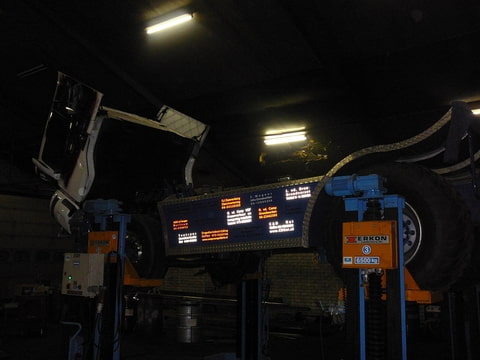
Power we run is about the same as the red hot team al do I think we run a lot less boost to get it?
Yesterday I had the chance to inspect the other turbocharger and after more than one year on the track it still feels like new so it looks like the turbo that give always problems is related to the company that builds them for us last year, lest call it an unbalanced act for now, we already had a new turbo under warranty that is already after some testing in a status running it self to expensive scrap metal. This story will maybe continue as we will try to resolve this bad turbo quality thing with an empty walled.
Work in progress. The hard of it all is already in. Time to install the gearbox.

Leiffi
New member
- Joined
- Jan 31, 2013
- Messages
- 1,381
I see no real relation between the small and big turbine, fact is we hit the surge line with the HX60 so we need to improve on that part so that’s why we going for other turbochargers.
Lower exhaust manifold backpressure helps engine breath better and moves compressor further away from surge. Or you can just use smaller 76 mm compressor. Thats stock 144 turbo then, small compressor big exhaust wheel. Have you tried different size exhaust housings?
BTW, why don't you use Scania marine exhaust manifolds made originally for twin turbochargers?
Lower exhaust manifold backpressure helps engine breath better and moves compressor further away from surge. Or you can just use smaller 76 mm compressor. Thats stock 144 turbo then, small compressor big exhaust wheel. Have you tried different size exhaust housings?
BTW, why don't you use Scania marine exhaust manifolds made originally for twin turbochargers?
Well Lieffi lets look @ the theoretically part first. In order to move air for example you will need power and the formula to calculate this is Power = pressure x flow x efficiency
The shaft power we need to move 0,88Kg/sec is about 325 turbine shaft Hp, now lets go to a smaller compressor let say a 78mm that dos only 0.74Kg/sec and it needs about 291 turbine shaft Hp to make it.
Both turbochargers run the same turbine group so conclusion is the smaller 78mm compressor wheel needs less power so even with a lot les exhaust gas volume chance is you can running a bigger expansion ratio on the turbine housing dropping back pressure.
Now comes the efficiency thing. If we try to squeeze 0.88Kg/sec out of a 78mm compressor we will run it way off the compressor chard needing 347 turbine shaft Hp as the compressor efficiency is close to none and that part most tuners forget about and that’s why we look @ compressor discharge pressure/temperature and exhaust pressure and turbine speed and air to fuel ratio (AFR) to get the whole picture.
Now on our engine. We do not run a massive amount of fuel on our engine to get the Hp as we run only 660cc as to most other engines run about 1200cc per cylinder making less Hp even so conclusion could be we run more efficient having a lot less exhaust volume to work with resulting in smaller turbines and housings still having the same backpressure as other engines making the same boost ratio.
Our game plan is to keep efficiency up and try not to run it off the chard looking for a better chard baying or making a better product.
Flow chard of a S482 and the HX60 80mm in red hitting 0.88Kg/sec @ 60% efficiency 3.4 pressure ratio where the S482 still dos more than 65% @ a 5 pressure ratio.
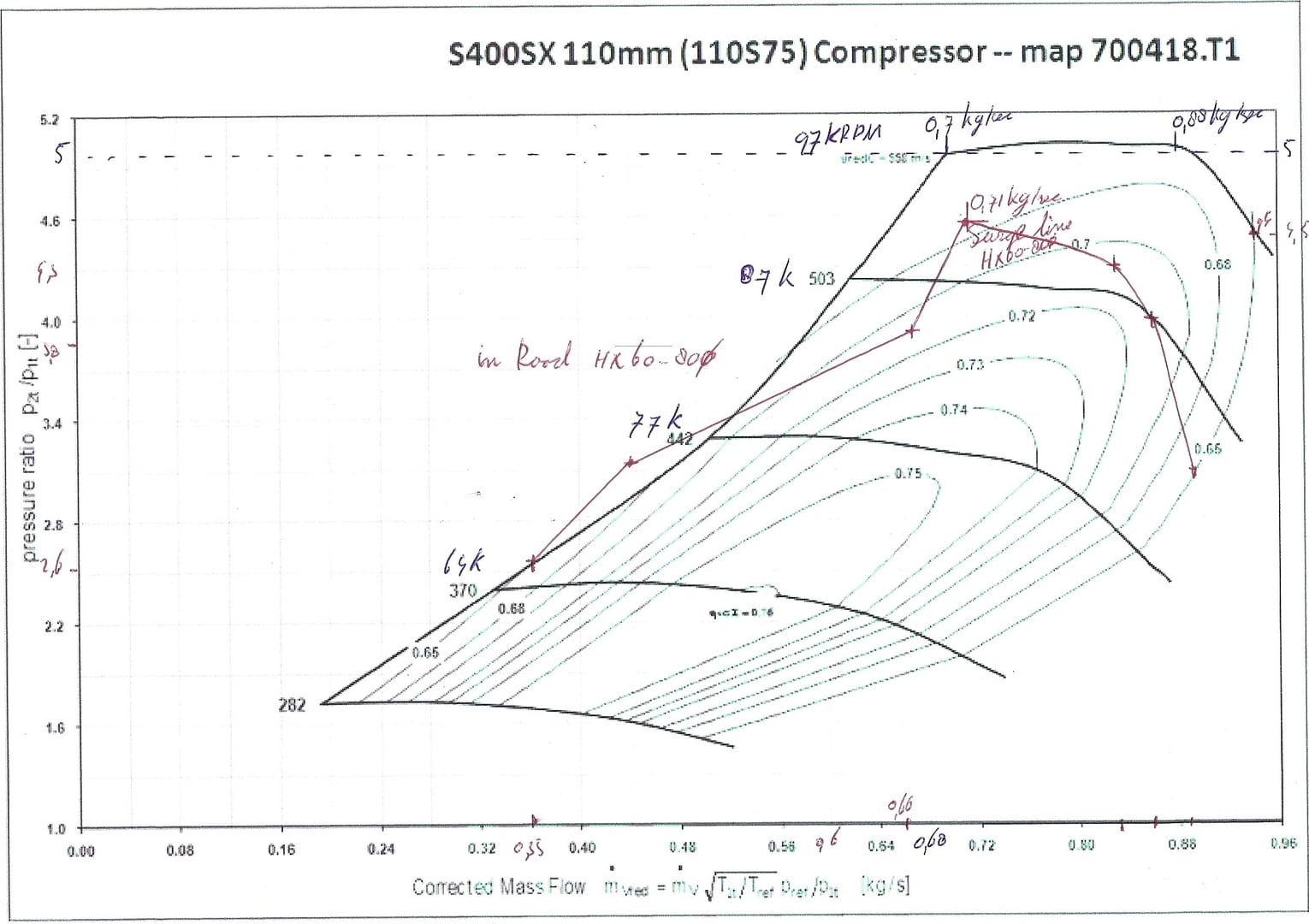
Lieffi you mean a exhaust manifold that looks like?
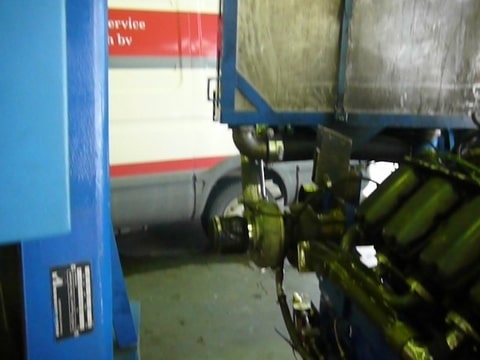
Last edited:
Leiffi
New member
- Joined
- Jan 31, 2013
- Messages
- 1,381
Well Lieffi lets look @ the theoretically part first. In order to move air for example you will need power and the formula to calculate this is Power = pressure x flow x efficiency
The shaft power we need to move 0,88Kg/sec is about 325 turbine shaft Hp, now lets go to a smaller compressor let say a 78mm that dos only 0.74Kg/sec and it needs about 291 turbine shaft Hp to make it.
Both turbochargers run the same turbine group so conclusion is the smaller 78mm compressor wheel needs less power so even with a lot les exhaust gas volume chance is you can running a bigger expansion ratio on the turbine housing dropping back pressure.
Now comes the efficiency thing. If we try to squeeze 0.88Kg/sec out of a 78mm compressor we will run it way off the compressor chard needing 347 turbine shaft Hp as the compressor efficiency is close to none and that part most tuners forget about and that’s why we look @ compressor discharge pressure/temperature and exhaust pressure and turbine speed and air to fuel ratio (AFR) to get the whole picture.
Now on our engine. We do not run a massive amount of fuel on our engine to get the Hp as we run only 660cc as to most other engines run about 1200cc per cylinder making less Hp even so conclusion could be we run more efficient having a lot less exhaust volume to work with resulting in smaller turbines and housings still having the same backpressure as other engines making the same boost ratio.
Our game plan is to keep efficiency up and try not to run it off the chard looking for a better chard baying or making a better product.
Flow chard of a S482 and the HX60 80mm in red hitting 0.88Kg/sec @ 60% efficiency 3.4 pressure ratio where the S482 still dos more than 65% @ a 5 pressure ratio.

Lieffi you mean a exhaust manifold that looks like?

But if your compressor is surging it is too big or your engine is not breathing well = too much exhaust backpressure.
No I don't mean exhaust manifold like that. Scania manifold is log type, like a truck manifold but made for twin turbos so it ends after last cylinder of the bank. Very compact, lots of energy to spin the turbine.

